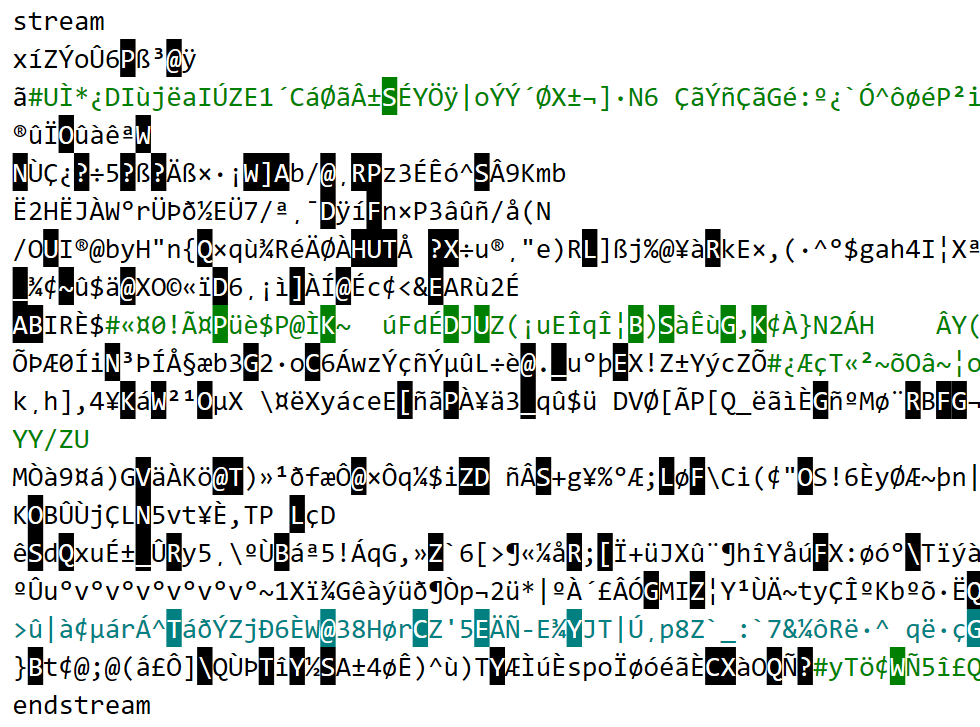- AuthorPosts
- May 17, 2018 at 6:54 pm #23207
Yang Yang
ParticipantHello Yutaka,
I understand that EmEditor is a text editor, but given the latest amazing support of DirectWrite rendering, I cannot help but to propose this idea: isn’t it nice if we can view binary data better in the text mode, showing hex values (rather than relying on the current font to display weird question marks) like what Sublime Text does?
Sometimes the hex mode is cumbersome when the document is half-text-half-binary, e.g., when checking the document structure of a PDF file. If one can directly see what the “underneath” bytes are (w/o the help of status bar), the life will be somewhat easier.
Thanks a million for the continuous improvements!
May 20, 2018 at 6:14 pm #23208Yutaka Emura
KeymasterHello Yang Yang,
How about the Show Control Characters option in the Marks page of configuration properties?
May 20, 2018 at 11:37 pm #23209Yang Yang
ParticipantIt’s better, but not by much. Please see the effect of EmEditor vs Sublime (showing a portion of a PDF file):

IMHO, the point of Sublime’s display is, provided that the user is familiar with the “extended ASCII encoding” part of his current code page, all content is crystal clear.
May 21, 2018 at 8:13 am #23210Yutaka Emura
KeymasterHi Yang Yang,
It looks that the file was opened with a wrong encoding with EmEditor because the symbol shouldn’t appear. What are those character code value(s)? Can you make sure if you use the same encoding to open the file as the other editor, and use the same font? Can you also please try opening the file with Binary (ASCII view) with EmEditor?
Thanks,May 21, 2018 at 8:47 am #23211Yutaka Emura
KeymasterHi Yang Yang,
I reproduced the symbols when opened as UTF-8 with EmEditor. Since the binary sequences can’t be decoded with UTF-8, invalid characters appear. Please use the Western European encoding or Binary (ASCII view) to open the file.
Thanks,May 21, 2018 at 8:54 am #23212Yang Yang
ParticipantGood catch! Please see this snapshot for Binary ASCII view:

This view is much better! It’s hard to believe that I’ve only used the Hex view for so long. But is there an acceptable way to memorize these control characters? Thanks again.
May 21, 2018 at 9:28 am #23213Yutaka Emura
KeymasterThese background/foreground-color-inversed characters are similar to caret notations except that carets are replaced with inversed representation. Please see :
https://en.wikipedia.org/wiki/Caret_notationThis way the control characters are readable while still preserving the width of each character.
Thanks,
May 21, 2018 at 9:36 am #23214Yang Yang
ParticipantWow, thanks a lot for your explanation and the reference link!
- AuthorPosts
- You must be logged in to reply to this topic.

